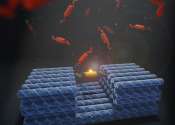Physical mechanisms explaining DNA and RNA twist changes
The double-helix structure of DNA is deformed by environmental stimuli, which will then affect gene expression, and eventually trigger a sequence of cellular processes. Recent research led by a physicist from City University ...









